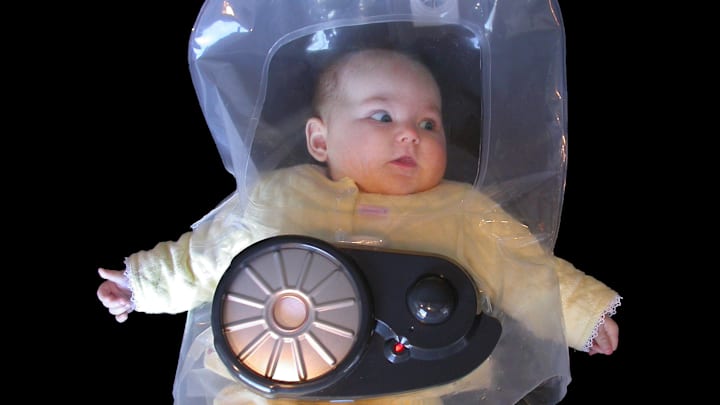Babyproofing Your Home: Safety Tips for New Parents

As your baby becomes more mobile and curious, ensuring that your home is a safe environment for them to explore becomes a top priority. Babyproofing your home involves identifying potential hazards and taking steps to eliminate or minimize risks. This comprehensive approach not only protects your baby from harm but also provides peace of mind for new parents. Here are essential safety tips to help create a secure space for your baby.
One of the first steps in babyproofing your home is securing furniture and appliances. Heavy furniture, such as bookshelves, dressers, and TVs, can pose serious risks if they tip over. Babies and toddlers often pull themselves up on furniture, and unsecured items can easily topple over, leading to injury. To prevent this, use anti-tip brackets or straps to anchor heavy furniture and appliances to the wall. Ensure that these items are stable and cannot be easily moved by your baby. This simple measure can significantly reduce the risk of accidents in your home.
Installing safety gates is another crucial aspect of babyproofing. Safety gates help block off areas that are not baby-friendly, such as stairs, kitchens, and bathrooms. Place gates at the top and bottom of stairs to prevent falls, and consider using them to keep your baby out of rooms with potential hazards. When choosing safety gates, make sure they are securely installed and cannot be easily opened by your baby. This precaution helps create safe zones where your baby can explore without constant supervision.
Electrical outlets are a common hazard for curious babies who love to explore with their fingers. To protect your baby from electrical shocks, use outlet covers or safety plugs to block access to electrical outlets. Additionally, keep cords and wires out of reach and securely fastened to prevent your baby from pulling on them. Regularly check for loose or frayed wires and replace them as needed. These simple steps can help prevent potentially dangerous situations.
Small objects that could pose a choking hazard should be kept out of reach of your baby. Regularly inspect your home for items such as coins, buttons, small toys, and other small objects that could be easily swallowed. Be mindful of household items like batteries, magnets, and small accessories, and ensure they are stored safely. Creating a habit of keeping small objects off the floor and low surfaces can significantly reduce the risk of choking incidents.
Cabinets and drawers often contain hazardous items that should be kept away from your baby. Install safety latches or locks on cabinets and drawers that contain cleaning supplies, medications, sharp objects, and small appliances. Ensure these items are securely stored out of reach of your baby. Consider placing non-toxic and safe items in lower cabinets that your baby can explore without risk. This not only keeps dangerous items out of reach but also allows your baby to satisfy their curiosity safely.
Windows and cords present additional hazards that need to be addressed. Ensure that windows are securely locked and cannot be easily opened by your baby. Install window guards or stops to prevent windows from opening more than a few inches. Keep cords from blinds and curtains out of reach, as they can pose a strangulation hazard. Use cord cleats or tie-up devices to secure cords and keep them away from your baby’s reach. These measures help prevent accidental falls and strangulation.
Sharp edges and corners on furniture can pose a risk of injury for active and curious babies. Use corner guards or edge bumpers to cushion sharp edges on coffee tables, countertops, and other furniture. Ensure that any glass furniture is made of tempered glass, which is less likely to shatter into sharp pieces. By softening the edges of your furniture, you can help prevent cuts and bruises when your baby is exploring.
Creating a safe sleep environment is critical for your baby’s well-being. Ensure that your baby’s crib is free from pillows, blankets, stuffed animals, and bumpers that could pose a suffocation risk. Use a firm mattress with a fitted sheet and place your baby on their back to sleep. Keep the crib away from windows, cords, and other potential hazards. A safe sleep environment reduces the risk of Sudden Infant Death Syndrome (SIDS) and other sleep-related accidents.
Hazardous materials, such as cleaning supplies, chemicals, medications, and toiletries, should be stored securely. Keep these items in locked cabinets or out of reach of your baby. Use child-resistant caps on medications and store them in a secure location. Ensure that all household chemicals are properly labeled and stored safely. This practice prevents accidental poisoning and exposure to harmful substances.
Finally, be mindful of hot surfaces in your home. Babies are naturally curious and may reach for hot surfaces, such as stoves, ovens, and heaters. Use stove knob covers and keep pot handles turned inward to prevent your baby from pulling on them. Install safety gates to block access to the kitchen when cooking, and ensure that heaters and radiators are covered or out of reach. These precautions help prevent burns and other heat-related injuries.
In conclusion, babyproofing your home is an essential step in ensuring your baby’s safety as they grow and explore. By securing furniture, installing safety gates, covering electrical outlets, keeping small objects out of reach, and creating a safe sleep environment, you can create a secure space for your baby. Additionally, storing hazardous materials safely, being mindful of hot surfaces, and using corner guards can further enhance your home’s safety. Taking these precautions helps protect your baby from harm and provides peace of mind for new parents.